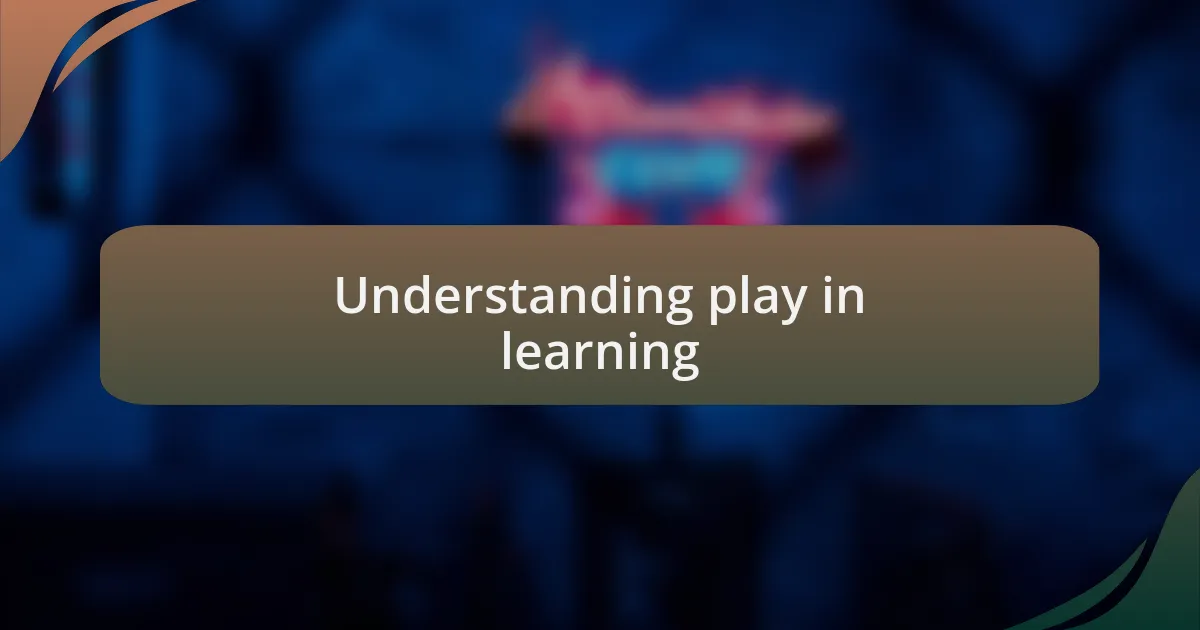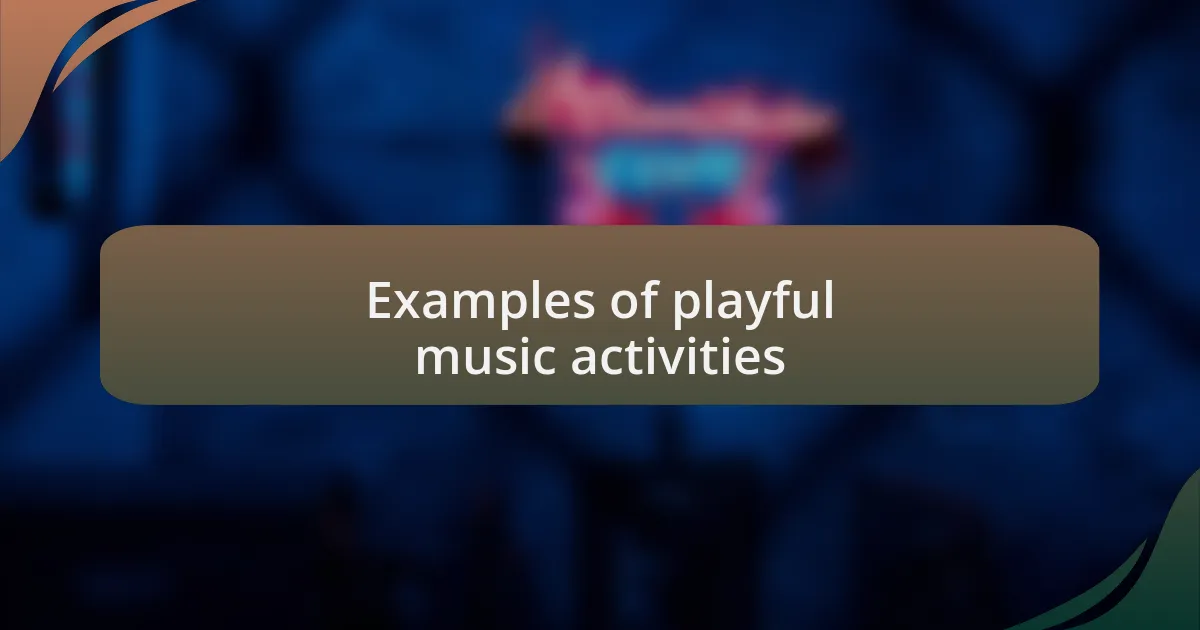Key takeaways:
- Play is a vital component of education, enhancing student engagement and creativity in learning.
- Activities like “Musical Chairs” with instruments and “Sound Scavenger Hunts” foster collaboration and exploration among students.
- “Story Songs” encourage spontaneity and imagination, resulting in memorable learning experiences.

Understanding play in learning
Play is often seen merely as a break from serious learning, but I’ve come to appreciate it as a fundamental approach to education. From my own teaching experiences, I’ve noticed how students engage with new concepts more deeply through playful activities. When a child interacts with music through improvisation, for example, it’s not just fun; it’s a way for them to express emotions and explore their creativity.
Have you ever watched a child lose themselves in the rhythm of a song? That’s the magic of play in learning. It creates a safe space for exploration and experimentation, allowing learners to make mistakes without the fear of judgment. In my own classroom, I’ve seen hesitant students become confident musicians simply through playful encounters with their instruments. This kind of engagement not only makes learning enjoyable but also fosters a love for music that can last a lifetime.
Moreover, play encourages collaboration among students. I recall a particular group project where students created their own musical compositions together. The laughter, the brainstorming, and the trial-and-error process reminded me that true learning often happens in these shared moments of play. Isn’t it fascinating how the energy of play can transform a classroom into a vibrant community of creators?

Examples of playful music activities
One of my favorite playful music activities is the “Musical Chairs” game, but with a twist. Instead of traditional chairs, I use different instruments placed around the room. When the music stops, students quickly pick up an instrument and play a designated rhythm. It’s exhilarating to see them experiment with sounds and engage with each other as they create spontaneous music—it’s a wonderful mix of laughter, competition, and learning. Have you noticed how quickly kids adapt when they are having fun?
Another activity that never fails to ignite excitement is the use of “Sound Scavenger Hunts.” I create a list of sounds or musical styles for students to find within the school or outdoors. They work in groups, searching for sounds that match what’s on their list, like birds chirping or a bouncing ball. This activity not only enhances their listening skills but also allows them to connect music with their environments. I still cherish the joy on their faces when they realize they can find music all around them.
I often incorporate “Story Songs” into my lessons, where students take turns adding lines of a story to a song they create together. The spontaneity of this activity yields some of the most memorable moments in my classroom. I remember one time, a student whimsically turned a mundane story about a cat into a hilarious adventure involving time travel and a DJ battle. Observing their creativity flourish in such a relaxed atmosphere reminds me why play is critical in music education. How often do we let kids simply take the reins and let their imaginations guide the way?